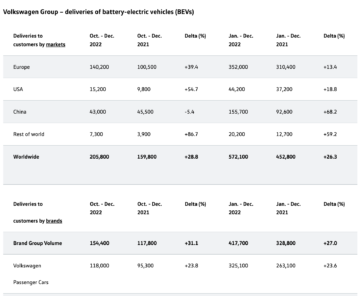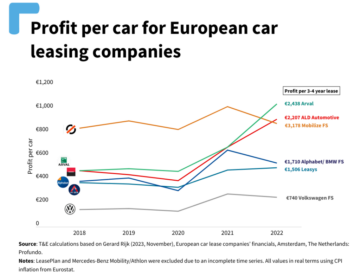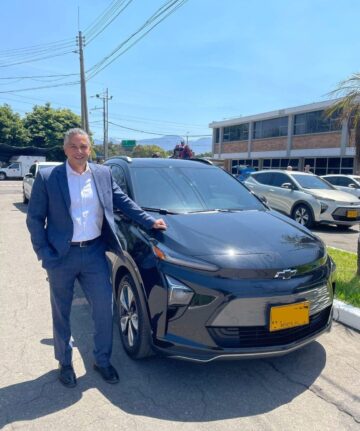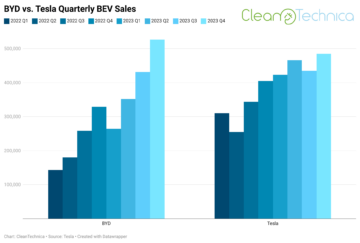Unoccupied aerial vehicles, better known as drones, have rapidly advanced from a quirky, high-flying novelty to a versatile workhorse.
They are tools for search and rescue, traffic monitoring, weather monitoring, and perhaps even package hauling.
One day, they may work with humans to augment the task of conducting surveys to detect low levels of radiation—information that could contribute to the decommissioning of sites no longer needed for nuclear-related energy production or research.
Pacific Northwest National Laboratory (PNNL) researchers found that drones have potential to conduct decommissioning radiological surveys, but further research is needed before the devices are approved for decommissioning purposes. The PNNL researchers detailed their findings for the U.S. Nuclear Regulatory Commission (NRC) in the recently released proof-of-concept report, “Drones for Decommissioning.”
“Drones would be particularly useful in areas that are unsafe for humans to access due to things like terrain that’s difficult to walk on,” said Amoret Bunn, an environmental engineer at PNNL and a study author. “Drones could also survey vertical surfaces that humans can’t get to like the outside of a tall building.”
[embedded content]
Pacific Northwest National Laboratory researchers found that drones have potential to conduct decommissioning radiological surveys, as detailed for the US Nuclear Regulatory Commission in the proof-of-concept report, “Drones for Decommissioning.” (Video: Pacific Northwest National Laboratory)
Low & Slow
Decommissioning surveys are conducted at former nuclear power plants and at former buildings or sites where radiological materials were present to demonstrate that a site is in compliance with regulations and can be released for alternative uses.
In the study to assess drones for radiological detection, researchers conducted an experiment at an open field on the PNNL campus in Richland, Washington. The experiment compared the ability of a flying drone carrying radiological survey equipment with the same survey equipment secured to a rolling cart. The cart was chosen because it could best mimic human-collected data to compare with the flying drone.
The drone was a six-propeller Aurelia X6, made by UAV Systems International, capable of carrying a payload of up to 11 pounds. A Federal Aviation Administration licensed pilot operated the drone.
A space below the battery platform and above the landing gear accommodated a payload and provided protection for delicate instruments. That payload included a data logger, a radiation detector, and a geography sensing system. It was secured to the drone with customized 3D-printed casings.
The flying drone and its rolling imitator traveled the same prescribed path, looking for the same radiological elements that researchers had placed on the field: small samples of cobalt-60 (Co-60), cesium-137 (Cs-137), and americium-241 (Am-241).
Both the drone and the human-propelled device performed about 1–3 feet above the surface. Altitude proved to be a significant factor in the flying drone’s ability to collect the radiological data.
External factors such as wind and weather changes also need to be considered, said PNNL physicist Harish Reddy Gadey.
“At most decommissioning sites, we are looking at very low levels of radiation,” said Gadey, a study author who played a key role in crafting the experiment while he was still a postdoc. “We need to be as close to the ground as possible, going as slow as possible to detect some of these very low levels of radiation. For a drone, flying low and slow is not typical.”

Researcher Harish Reddy Gadey walks a test path as a human surveyor, using a rolling cart to collect radiological data for comparison to the data collected by the same survey devices attached to a flying drone. (Photo by Graham Bourque | Pacific Northwest National Laboratory)
Good Potential
Drones already have an important role in radiation monitoring and in the nuclear industry worldwide. Those equipped with radiological detection systems evaluate radiation for incident response and cleanup. Drones are used to develop contamination maps at legacy uranium sites, to monitor and detect radiation leaks, make visual inspections at nuclear facilities, and conduct unsupervised radiological measurements. After the Fukushima Daiichi nuclear power plant disaster in Japan, drones assessed the damaged reactor’s condition.
“The NRC’s mission is to protect public health and the environment,” said Stephanie Bush-Goddard, the drone project lead for the NRC’s Future Focused Research Program. “This work by PNNL advances this mission and makes the use of drone technology possible for these applications.”

Small samples of radiological sources commonly surveyed during decommissioning—cobalt-60 (Co-60), cesium-137 (Cs-137), and americium-241 (Am-241)—were duct-taped to 2 × 4 boards to create a test track for the drone- and handcart-mounted radiological detectors. The path included an area for measuring background radiation. (Photo by Andrea Starr | Pacific Northwest National Laboratory)
The study concludes with suggestions for overall improvements in drone performance as well as upgrades to the flying drone that would make it better suited for a decommissioning radiological survey. Among other things, the study says, “once additional research and instrumentation improvements are complete, NRC could provide guidance on the compliance with UAV [drone] usage at decommissioning sites with consideration of aviation safety.”
Eventually, Gadey said, survey-suitable drones could likely be programmed to perform remotely at a site, without constant piloting.
In addition to Bunn and Gadey, the PNNL team included researcher Katie Wagner, Debbie Fagan, Tracy Ikenberry, Kameron Markham, and Moses Obiri.
Originally published at PNNL
Sign up for daily news updates from CleanTechnica on email. Or follow us on Google News!
Have a tip for CleanTechnica, want to advertise, or want to suggest a guest for our CleanTech Talk podcast? Contact us here.
Former Tesla Battery Expert Leading Lyten Into New Lithium-Sulfur Battery Era — Podcast:
I don’t like paywalls. You don’t like paywalls. Who likes paywalls? Here at CleanTechnica, we implemented a limited paywall for a while, but it always felt wrong — and it was always tough to decide what we should put behind there. In theory, your most exclusive and best content goes behind a paywall. But then fewer people read it! We just don’t like paywalls, and so we’ve decided to ditch ours. Unfortunately, the media business is still a tough, cut-throat business with tiny margins. It’s a never-ending Olympic challenge to stay above water or even perhaps — gasp — grow. So …
Advertisement
- SEO Powered Content & PR Distribution. Get Amplified Today.
- EVM Finance. Unified Interface for Decentralized Finance. Access Here.
- Quantum Media Group. IR/PR Amplified. Access Here.
- PlatoAiStream. Web3 Data Intelligence. Knowledge Amplified. Access Here.
- Source: https://cleantechnica.com/2023/06/07/drones-fly-low-slow-for-radiation-detection/
- :is
- :not
- :where
- $UP
- 1
- 11
- 9
- a
- ability
- About
- above
- access
- addition
- Additional
- administration
- advanced
- advances
- Advertise
- After
- already
- also
- alternative
- always
- among
- an
- and
- applications
- approved
- ARE
- AREA
- areas
- AS
- assess
- assessed
- At
- attached
- author
- aviation
- background
- battery
- BE
- because
- before
- behind
- below
- BEST
- Better
- Bit
- Building
- business
- but
- by
- Campus
- CAN
- capable
- carrying
- challenge
- Changes
- chip
- chosen
- cleantech
- Cleantech Talk
- Close
- collect
- commission
- commonly
- compare
- compared
- comparison
- complete
- compliance
- condition
- Conduct
- conducted
- conducting
- consideration
- considered
- constant
- content
- contribute
- could
- create
- customized
- data
- day
- decide
- decided
- demonstrate
- detailed
- Detection
- develop
- device
- Devices
- difficult
- disaster
- do
- don
- drone
- drone technology
- Drones
- due
- during
- elements
- embedded
- energy
- engineer
- Environment
- environmental
- equipment
- equipped
- Era
- Ether (ETH)
- evaluate
- Even
- Exclusive
- experiment
- expert
- facilities
- factor
- factors
- Federal
- Federal Aviation Administration
- Feet
- fewer
- field
- findings
- flying
- focused
- For
- Former
- found
- from
- further
- Gear
- geography
- get
- Goes
- going
- Ground
- Grow
- Guest
- guidance
- had
- Have
- he
- Health
- help
- here
- HTML
- http
- HTTPS
- human
- Humans
- if
- implemented
- important
- improvements
- in
- incident
- incident response
- included
- industry
- instruments
- International
- into
- IT
- ITS
- Japan
- jpg
- just
- Key
- known
- laboratory
- landing
- lead
- leading
- Leaks
- Legacy
- levels
- Licensed
- like
- likely
- Limited
- longer
- looking
- Low
- low levels
- made
- make
- MAKES
- Maps
- margins
- materials
- max-width
- May..
- measurements
- measuring
- Media
- Mission
- Monitor
- monitoring
- monthly
- most
- National
- Need
- needed
- New
- news
- no
- novelty
- nuclear
- Nuclear power
- of
- Olympic
- on
- open
- operated
- or
- Other
- our
- outside
- overall
- Pacific
- package
- particularly
- path
- Patreon
- PayPal
- People
- perform
- performance
- performed
- perhaps
- pilot
- plants
- platform
- plato
- Plato Data Intelligence
- PlatoData
- played
- please
- podcast
- possible
- potential
- pounds
- power
- power plants
- present
- Production
- programmed
- project
- protect
- protection
- proved
- provide
- provided
- public
- public health
- published
- purposes
- put
- Radiation
- rapidly
- Read
- recently
- regulations
- regulatory
- released
- report
- rescue
- research
- researcher
- researchers
- response
- Role
- Rolling
- s
- Safety
- Said
- same
- says
- Search
- Secured
- should
- significant
- site
- Sites
- slow
- small
- So
- some
- Sources
- Space
- stay
- Still
- Study
- such
- suggest
- support
- Surface
- Survey
- surveyed
- system
- Systems
- Talk
- Task
- team
- Technology
- Tesla
- test
- that
- The
- their
- then
- theory
- There.
- These
- they
- things
- this
- those
- tip
- to
- tools
- tough
- track
- traffic
- traveled
- typical
- u.s.
- UAV
- Updates
- upgrades
- us
- Usage
- use
- used
- uses
- using
- Ve
- Vehicles
- versatile
- vertical
- very
- via
- Video
- want
- was
- washington
- Water
- we
- Weather
- WELL
- were
- What
- while
- WHO
- wind
- with
- without
- Work
- worldwide
- would
- Wrong
- you
- Your
- youtube
- zephyrnet







